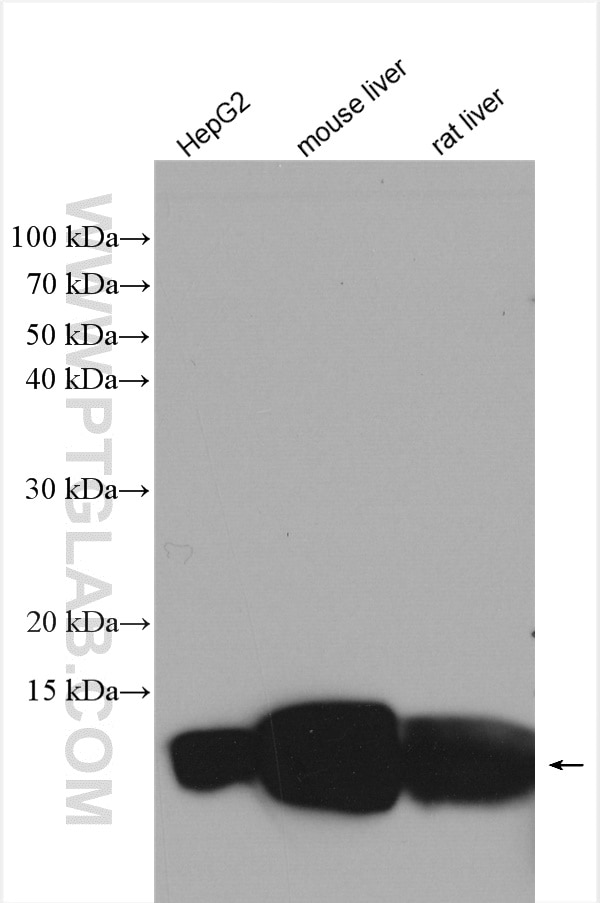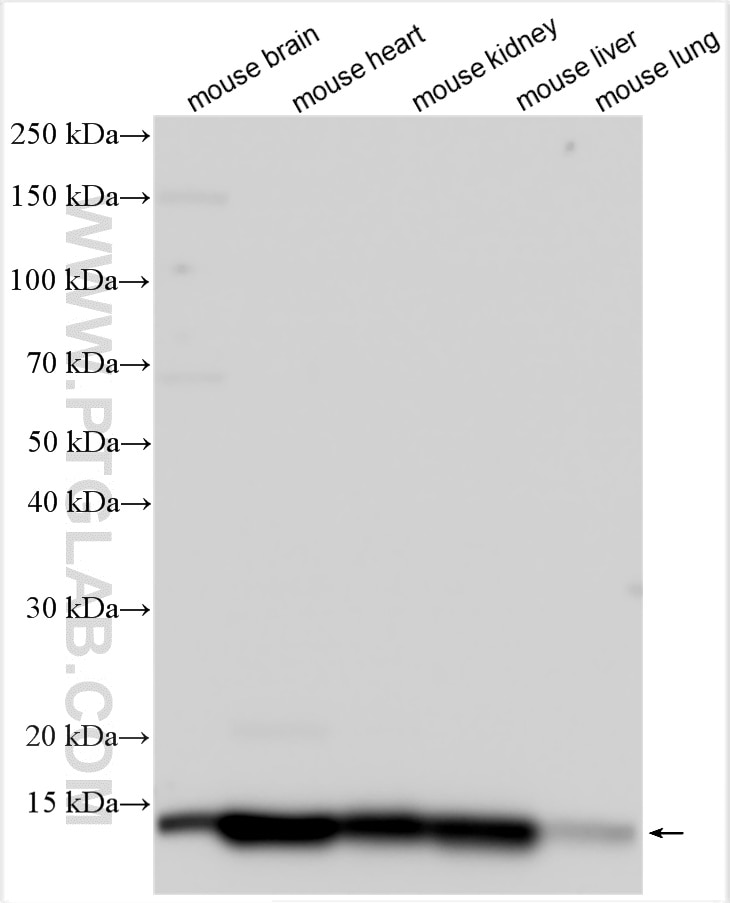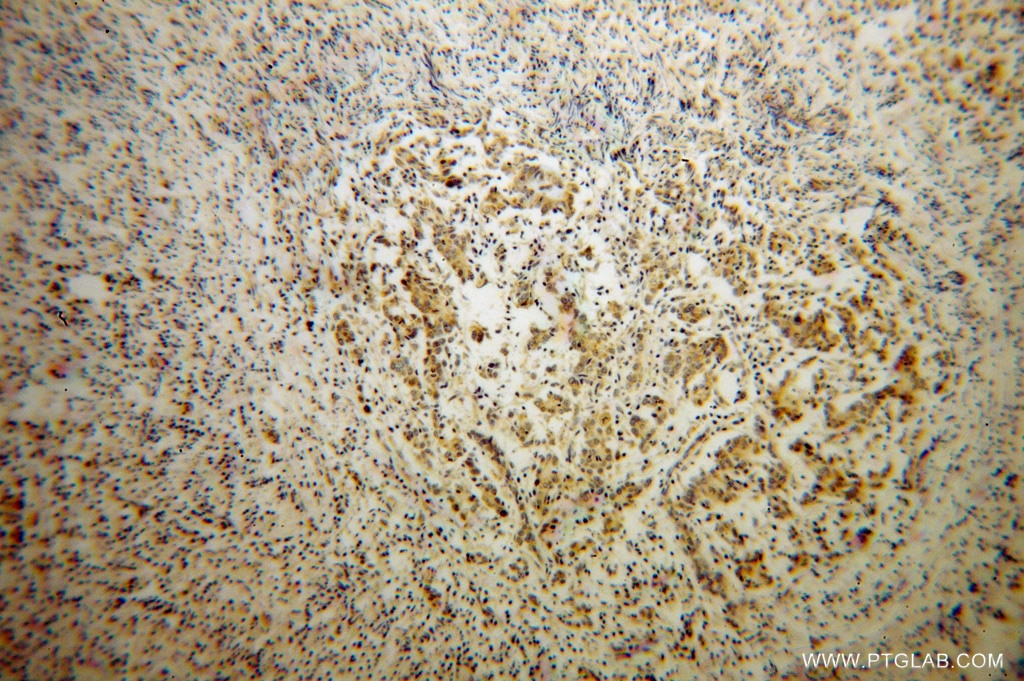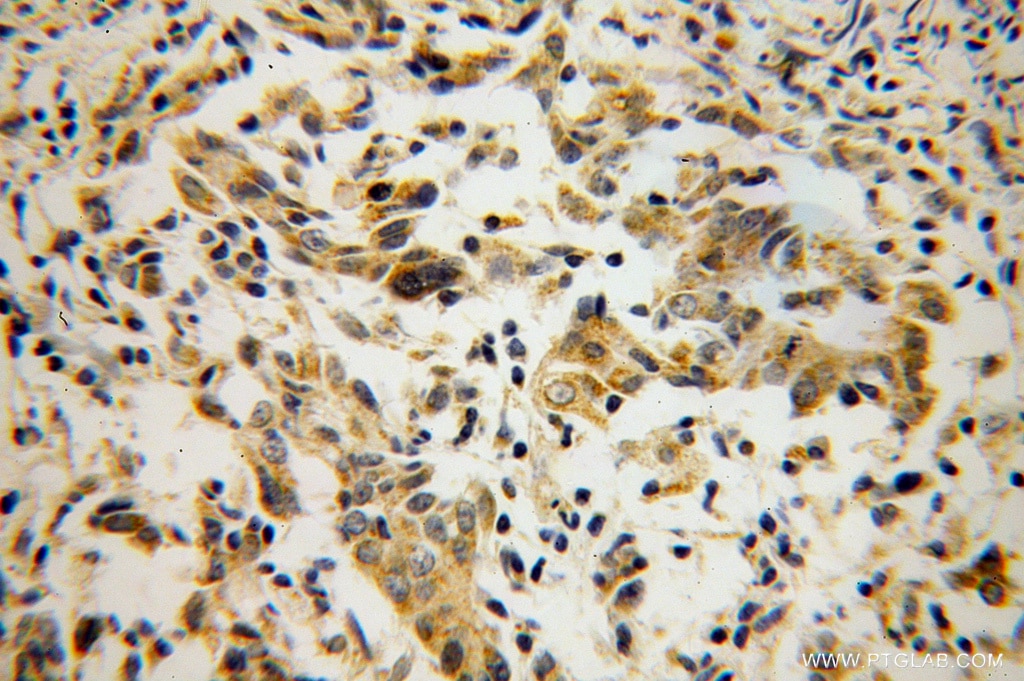Anticorps Polyclonal de lapin anti-SDHC
SDHC Polyclonal Antibody for WB, IHC, ELISA
Hôte / Isotype
Lapin / IgG
Réactivité testée
Humain, rat, souris et plus (1)
Applications
WB, IHC, ELISA
Conjugaison
Non conjugué
N° de cat : 14575-1-AP
Synonymes
Galerie de données de validation
Applications testées
| Résultats positifs en WB | cellules HepG2, tissu cardiaque de souris, tissu cérébral de souris, tissu hépatique de rat, tissu hépatique de souris, tissu pulmonaire de souris, tissu rénal de souris |
| Résultats positifs en IHC | tissu de cancer du sein humain il est suggéré de démasquer l'antigène avec un tampon de TE buffer pH 9.0; (*) À défaut, 'le démasquage de l'antigène peut être 'effectué avec un tampon citrate pH 6,0. |
Dilution recommandée
| Application | Dilution |
|---|---|
| Western Blot (WB) | WB : 1:500-1:2000 |
| Immunohistochimie (IHC) | IHC : 1:20-1:200 |
| It is recommended that this reagent should be titrated in each testing system to obtain optimal results. | |
| Sample-dependent, check data in validation data gallery | |
Applications publiées
| WB | See 7 publications below |
| IHC | See 1 publications below |
Informations sur le produit
14575-1-AP cible SDHC dans les applications de WB, IHC, ELISA et montre une réactivité avec des échantillons Humain, rat, souris
| Réactivité | Humain, rat, souris |
| Réactivité citée | Humain, Lapin, souris |
| Hôte / Isotype | Lapin / IgG |
| Clonalité | Polyclonal |
| Type | Anticorps |
| Immunogène | SDHC Protéine recombinante Ag5775 |
| Nom complet | succinate dehydrogenase complex, subunit C, integral membrane protein, 15kDa |
| Masse moléculaire calculée | 19 kDa |
| Poids moléculaire observé | 15 kDa |
| Numéro d’acquisition GenBank | BC033626 |
| Symbole du gène | SDHC |
| Identification du gène (NCBI) | 6391 |
| Conjugaison | Non conjugué |
| Forme | Liquide |
| Méthode de purification | Purification par affinité contre l'antigène |
| Tampon de stockage | PBS with 0.02% sodium azide and 50% glycerol |
| Conditions de stockage | Stocker à -20°C. Stable pendant un an après l'expédition. L'aliquotage n'est pas nécessaire pour le stockage à -20oC Les 20ul contiennent 0,1% de BSA. |
Informations générales
SDHC(Succinate dehydrogenase cytochrome b560 subunit, mitochondrial) is also named as CYB560, SDH3 and belongs to the cytochrome b560 family. It is involved in complex II of the mitochondrial electron transport chain and is responsible for transferring electrons from succinate to ubiquinone (coenzyme Q). Defects in SDHC are the cause of paragangliomas type 3 (PGL3) and paraganglioma and gastric stromal sarcoma (PGGSS). It has a transit peptide of 29 amino acid and has 5 isoforms produced by alternative splicing.
Protocole
| Product Specific Protocols | |
|---|---|
| WB protocol for SDHC antibody 14575-1-AP | Download protocol |
| IHC protocol for SDHC antibody 14575-1-AP | Download protocol |
| Standard Protocols | |
|---|---|
| Click here to view our Standard Protocols |
Publications
| Species | Application | Title |
|---|---|---|
Nat Commun Low chorionic villous succinate accumulation associates with recurrent spontaneous abortion risk. | ||
Nucleic Acids Res Base-excision repair deficiency alone or combined with increased oxidative stress does not increase mtDNA point mutations in mice. | ||
iScience Prevention and regression of megamitochondria and steatosis by blocking mitochondrial fusion in the liver. | ||
PLoS One Quantitative proteomics in A30P*A53T α-synuclein transgenic mice reveals upregulation of Sel1l. | ||
Cell Rep Mitochondrial SENP2 regulates the assembly of SDH complex under metabolic stress | ||
Front Immunol Comprehensive analysis of the prognosis, tumor microenvironment, and immunotherapy response of SDHs in colon adenocarcinoma |





